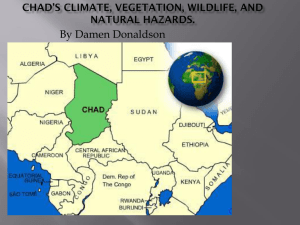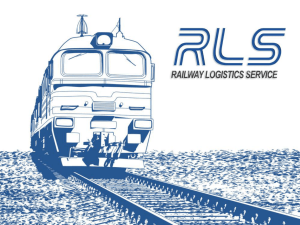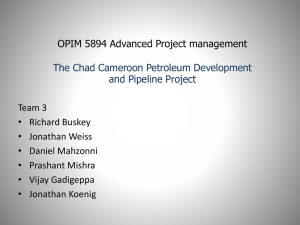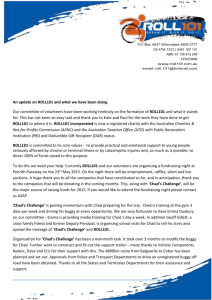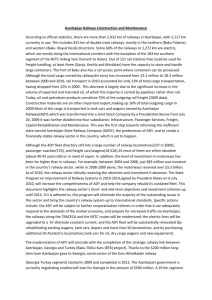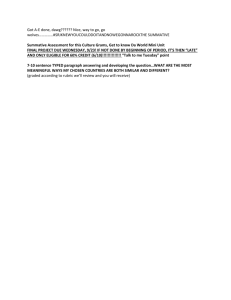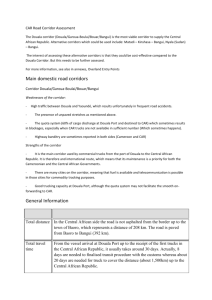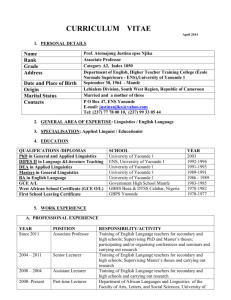Cameroon Railway Service from Douala to Ngaoundere
advertisement
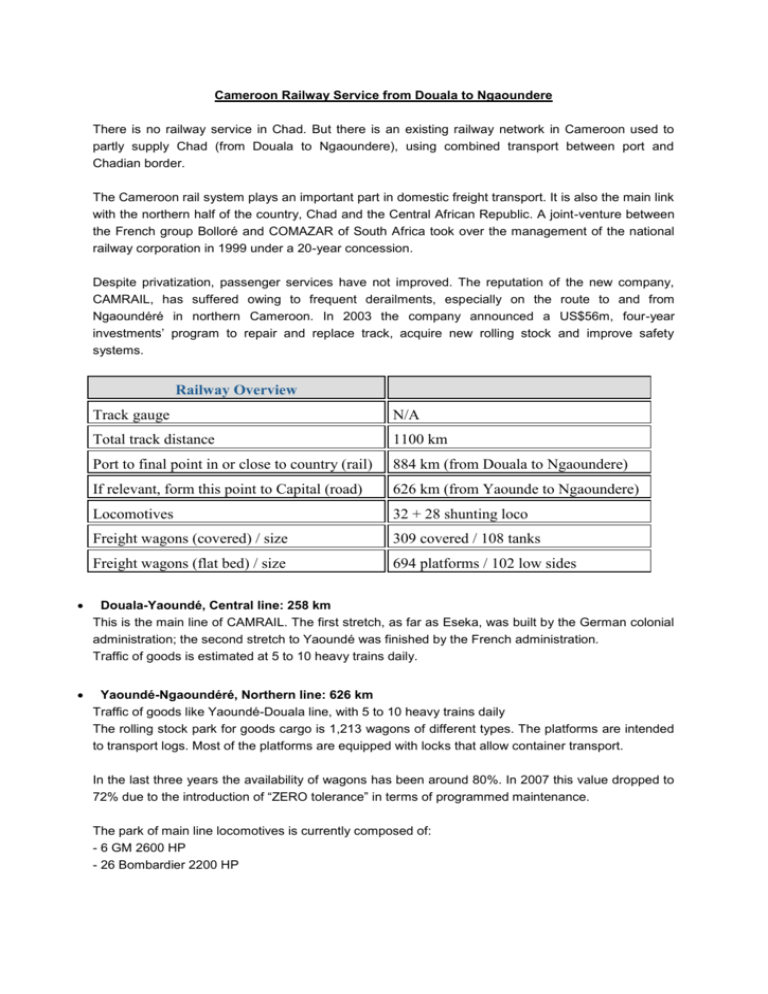
Cameroon Railway Service from Douala to Ngaoundere There is no railway service in Chad. But there is an existing railway network in Cameroon used to partly supply Chad (from Douala to Ngaoundere), using combined transport between port and Chadian border. The Cameroon rail system plays an important part in domestic freight transport. It is also the main link with the northern half of the country, Chad and the Central African Republic. A joint-venture between the French group Bolloré and COMAZAR of South Africa took over the management of the national railway corporation in 1999 under a 20-year concession. Despite privatization, passenger services have not improved. The reputation of the new company, CAMRAIL, has suffered owing to frequent derailments, especially on the route to and from Ngaoundéré in northern Cameroon. In 2003 the company announced a US$56m, four-year investments’ program to repair and replace track, acquire new rolling stock and improve safety systems. Railway Overview Track gauge N/A Total track distance 1100 km Port to final point in or close to country (rail) 884 km (from Douala to Ngaoundere) If relevant, form this point to Capital (road) 626 km (from Yaounde to Ngaoundere) Locomotives 32 + 28 shunting loco Freight wagons (covered) / size 309 covered / 108 tanks Freight wagons (flat bed) / size 694 platforms / 102 low sides Douala-Yaoundé, Central line: 258 km This is the main line of CAMRAIL. The first stretch, as far as Eseka, was built by the German colonial administration; the second stretch to Yaoundé was finished by the French administration. Traffic of goods is estimated at 5 to 10 heavy trains daily. Yaoundé-Ngaoundéré, Northern line: 626 km Traffic of goods like Yaoundé-Douala line, with 5 to 10 heavy trains daily The rolling stock park for goods cargo is 1,213 wagons of different types. The platforms are intended to transport logs. Most of the platforms are equipped with locks that allow container transport. In the last three years the availability of wagons has been around 80%. In 2007 this value dropped to 72% due to the introduction of “ZERO tolerance” in terms of programmed maintenance. The park of main line locomotives is currently composed of: - 6 GM 2600 HP - 26 Bombardier 2200 HP The availability of the Bombardier locomotives during the first half of 2007 was around 78% (20 locos). Still in the first six months of 2007, the GMs had an availability of 28% (1.5 locos). The commercial speed has increased from 15 Km/H (2004) to the current 19 Km/H with the intention of reaching 22Km/H by end of 2009. Heavy maintenance and in certain cases rehabilitation of the railway track will continue at least up to 2010. The number of derailments has decreased from 72 in 2005 to 56 in 2006. In 2007 the number of derailments in the first half was similar to the same period in 2006. CAMRAIL operates about 1,100 track kilometres of rail as follows. The entire network is connected to the Port of Douala. Stations / dry ports Main stations are: - Nsongkamba - Kumba - Mbanga - Douala (to Chad) - Edea (to Chad) - Mbalmayo - Yaounde (to Chad) - Belabo (to Chad) - Ngaoundere (to Chad) Contacts Other Comments Statistics from the Bolloré Group show that CAMRAIL transported a total of 1,900,000 tons of cargo in 2004. It is estimated that 60% of the current upward cargo (From Douala Port) is destined to Ngaoundéré. UPWARD CARGO - Oil products: 21% (of the total volume of cargo) - Fertilizer: 5% - Food products: 15% In 2007, CAMRAIL planned to transport 1.9 million MT. This value is 100,000 MT higher than the output of 2006 and at the same level of tonnage reached in 2005. This gives a planned monthly average capacity of 158,000 MT (36,500 per week). It should be mentioned that an augmentation of railway demand is expected in future due to two main reasons: - Increase on the imports from Chad; - More strict control in Cameroon on the trucks weight, through installation of weight bridges along the road. As a result the trucks cannot overload and the cost per MT increases.

